Emerald Physics EP4.7 Loudspeaker
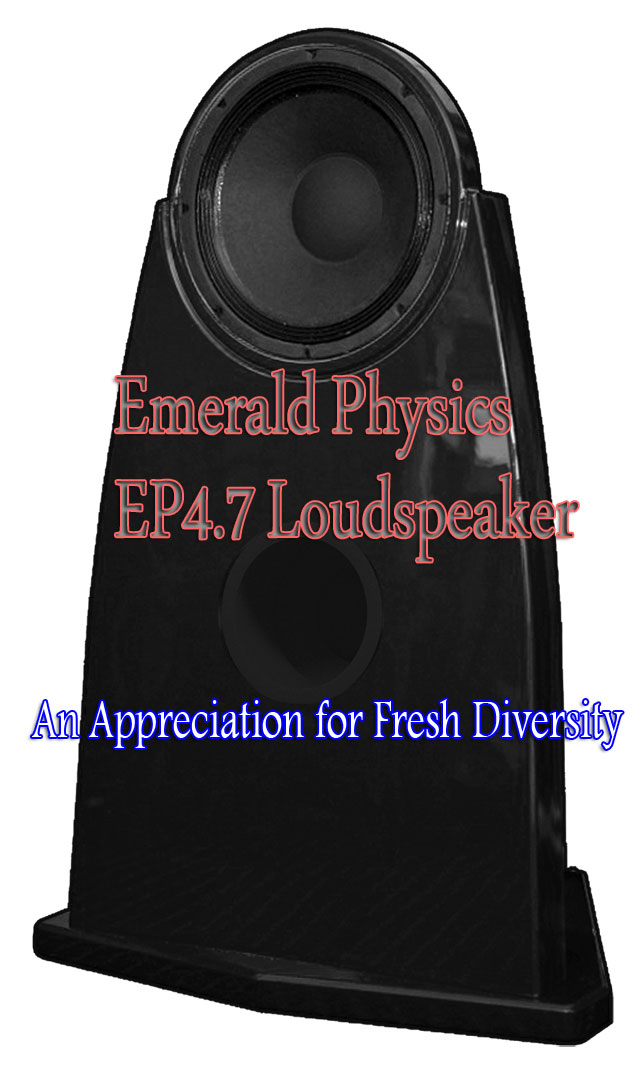
 I’ll admit to being a longtime lover of classic box speaker designs. From ProAc and Dynaudio to Talon Audio and most recently Escalante Design, I have enjoyed an endless parade of big box speakers in my home. Heck, for a long time, the only time I ever heard a speaker that wasn’t a box was when I’d stop in at a local Magnepan dealer. But it was always the same story. I’d sit and listen to a pair of SMGa and would be blown away by the level of musicality and airiness that they possessed and would get a pair to take home for a weekend audition and then be horrified by how bad they sounded in my home. Tuneful bass? Gone! Musical and spacious sound? Gone! Cool looks in my living room? Oh yeah baby. But good looks mean nothing without good sound. As it turned out, the little Maggies actually did possess all of those attributes. The problem was, they were confined to a very small sweet spot. Small sweet spots seemed to be the bad news that followed many moderately sized non-box designs. So after brief overtures with the SMGa and other non-box speakers like the Apogee Stage, and Martin Logan Aerius, I’d eventually go running back to my boxes; my great big ol’ uninteresting looking boxes. Thankfully, Terry London, a great audio writer for Home Theater Review fell in love with the Lawrence Audio Cello loudspeakers and was willing to part company with his long-time reference, the towering Magnepan MG20, and I was there to take them off of his hands. A few months later I added the Pass Labs XVR-1 electronic crossover and four channels of Bel Canto amplification and I have been in musical Nirvana ever since.
I’ll admit to being a longtime lover of classic box speaker designs. From ProAc and Dynaudio to Talon Audio and most recently Escalante Design, I have enjoyed an endless parade of big box speakers in my home. Heck, for a long time, the only time I ever heard a speaker that wasn’t a box was when I’d stop in at a local Magnepan dealer. But it was always the same story. I’d sit and listen to a pair of SMGa and would be blown away by the level of musicality and airiness that they possessed and would get a pair to take home for a weekend audition and then be horrified by how bad they sounded in my home. Tuneful bass? Gone! Musical and spacious sound? Gone! Cool looks in my living room? Oh yeah baby. But good looks mean nothing without good sound. As it turned out, the little Maggies actually did possess all of those attributes. The problem was, they were confined to a very small sweet spot. Small sweet spots seemed to be the bad news that followed many moderately sized non-box designs. So after brief overtures with the SMGa and other non-box speakers like the Apogee Stage, and Martin Logan Aerius, I’d eventually go running back to my boxes; my great big ol’ uninteresting looking boxes. Thankfully, Terry London, a great audio writer for Home Theater Review fell in love with the Lawrence Audio Cello loudspeakers and was willing to part company with his long-time reference, the towering Magnepan MG20, and I was there to take them off of his hands. A few months later I added the Pass Labs XVR-1 electronic crossover and four channels of Bel Canto amplification and I have been in musical Nirvana ever since.
But my love affair with the MG20 has lead me to consider if other non-box designs might give me a similar glimpse of Audio Heaven. Fortunately, I found myself in a lengthy discussion on this subject with CP (Clement Perry), when he mentioned that there was an opportunity to review a pair of speakers from Emerald Physics. I have known about the Emerald Physics speakers for a while now, after seeing and hearing them at a few audio shows over the last few years. But to be honest, I was probably more enamored with their stylish art gallery looks than their sound. But they did have one distinct feature that did intrigue me… No box. So when CP put me in touch with Mark Schifter, the company’s Director of Product Development, Export Sales and Marketing, I was both excited and wary when he told me that a pair of the company’s new EP4.7 loudspeakers would be on their way. I say wary because since installing the MG20 and XVR-1 into my reference system, I have been so happy with the sound that other speakers have simply held no interest to me. In fact, during the last three years the only other speaker I’ve reviewed has been the short lived Sonic Hemisphere Fidelity One. So I knew that the EP4.7 was really going to have to go some in order to gain favor with me. So how did the speaker stack up? You know the drill…
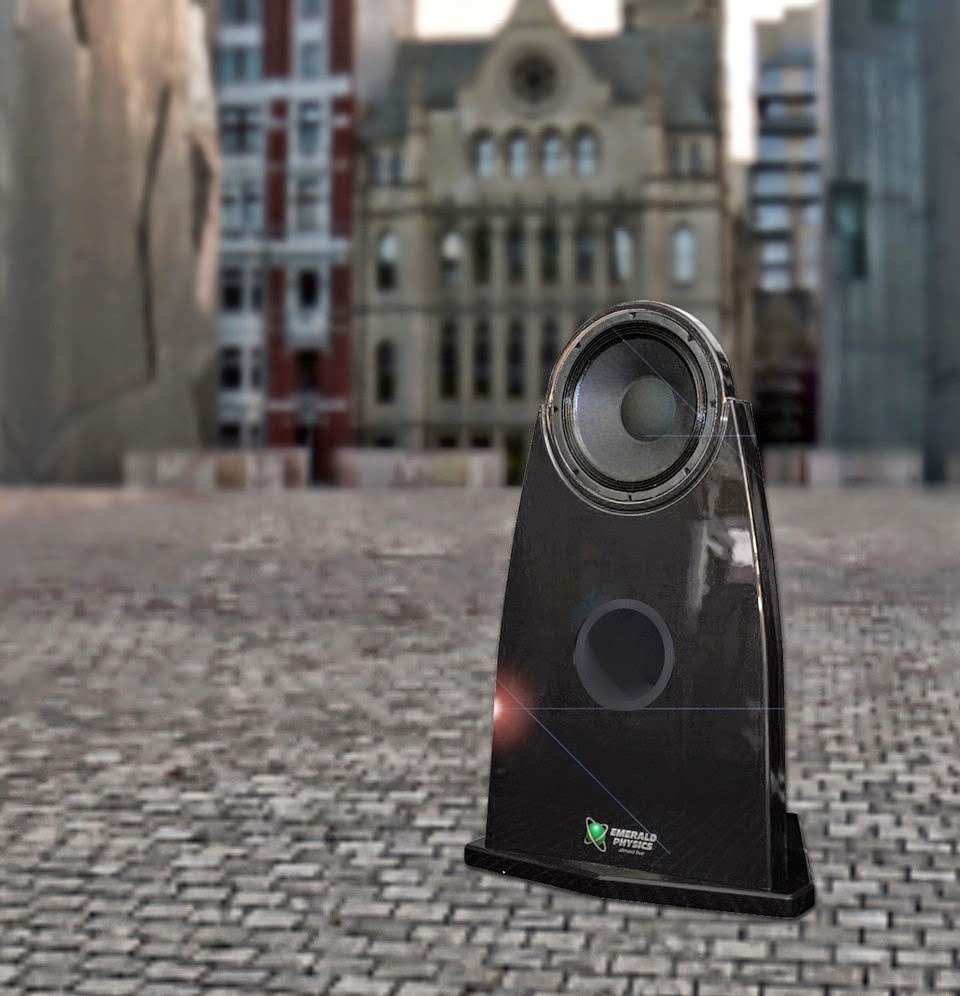
About the Company
Early Emerald Physics speakers were designed by Clayton Shaw (the CS series). He eventually sold the company to Walter Liederman (who at the time was an Emerald Physics dealer), so that he could focus on product development. Initially, Liederman was only a partial owner of the company but under the urging of Shaw, purchased complete control about six years ago. About two and a half years ago, Schifter (formerly of Audio Alchemy digital products) was brought in to take over the design and engineering chores and was asked to improve the cosmetics, crossover,driver designs, etc. About a year ago he took over the DSP programming in an effort to move Clayton’s work forward. “I can surely say that the success we are achieving is the result of the dedicated program to design our own drivers and crossovers and of course the new cosmetics made a huge impact as well,” said Schifter. “I work in tandem on the drivers and the crossovers with Daniel Mullins from Canada. Dan has been a key element to our success. We work together on the design side to make these speakers (at their prices) possible.”
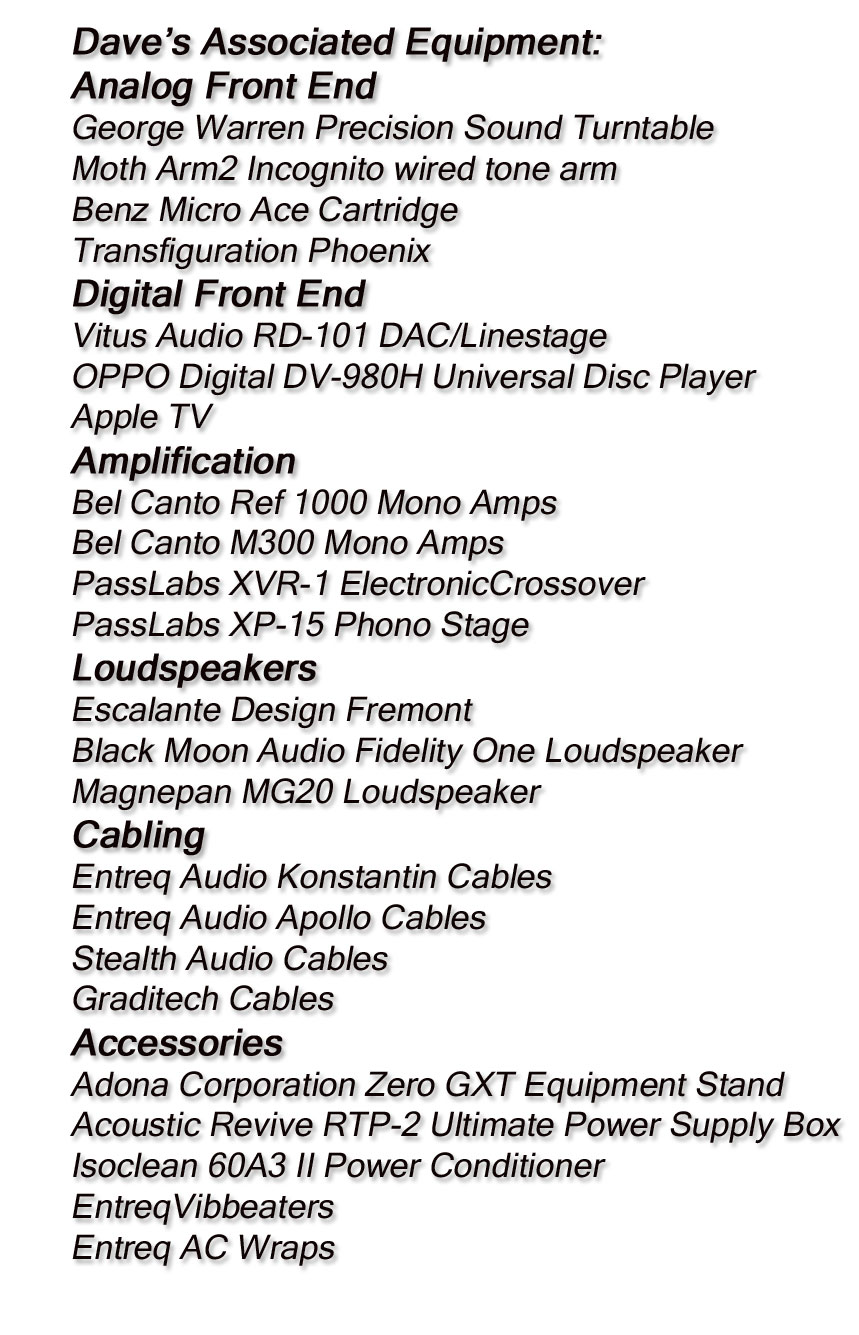 System and Setup
System and Setup
I already mentioned that the EP4.7 system would be replacing my Maggie MG20 and Pass XVR-1. The rest of the system for this review consisted of the George Warren turntable with Incognito-modified Moth2 tonearm and Denon DL110 cartridge, going into a Pass Labs XP15 phonostage. The digital sources were the Oppo DV-980H disc player (as transport) and an Apple TV music streamer, feeding the Vitus Audio RD-100 DAC/Linestage. Amplification came from the Bel Canto M300 and Ref 1000M mono amps feeding the high and low frequency drivers, respectively. Cabling was the Entreq Apollo and Soundstring Platinum series cables. My listening room is approximately 26’ wide, 20’ deep and with 8’ high ceilings. My floors are concrete covered with Berber carpeting.
When the speakers arrived they came in two large flat boxes and one smaller box. The large boxes contained the speakers and bases and the small box contained the passive crossovers and a digital crossover/equalizer. It didn’t take long for me to figure out that getting this system setup properly and sounding right was going to take a bit of effort. That’s what I thought anyway.
Assembling the speakers and bases themselves was fairly simple. The front (and only) baffle is made of 3” thick MDF and sits on top of a 2” thick base. In total, the speaker is about 22” wide and 39” tall, including their proprietary 12” midrange/point source concentric tweeter, which takes up the top third of the speaker. Below the midrange/tweeter is another proprietary driver, a massive 15” open baffle woofer that feeds a 6” diameter port. This is part of the speaker’s Aperture Bass Propagation Technology. It is designed to increase low frequency power and linearity. Both the front baffle and base are finished with a gorgeous black automotive Tri-coat paint. There are no provisions for spiked feet so I used a set of brass cones under each speaker.
The EP4.7 comes with a digital crossover/equalizer called the DSP 2.4. It connects to your amplifiers (via RCA connectors) which in turn feed the two passive crossovers that connect to the speakers’ binding posts. The passive crossovers come in small black boxes approximately 8” x 4” x 6” (whd). They have two sets of high-quality speaker posts on the front and back. One set is for MID/HI frequency amplification and the other of low frequency amplification.
One of the neat things about the DSP 2.4 is that you can connect it to your computer and download new EQ files. This means that you can adjust the EQ settings to tailor the sound to suit your tastes or room configuration. Luckily for me, Mark Schifter was already familiar with Maggies and sent me a unit with suitable EQ settings. So there was no need to make any further adjustments. The speakers come with a nicely detailed owner’s manual so making these adjustments shouldn’t be that difficult. I saved myself a little of time by getting Schifter on the phone and he got me sorted out in fairly short order.
Getting Into Music
 After getting everything properly connected, I began listening to music so that I could determine the best possible placement of the speakers. I started out placing them in the same location as my Maggies. That being 13’ apart and 4’ from the rear wall. My listening position was 13’ back from the speakers. The first thing I listened to was Robert Glasper’s “Canvas,” from the album Canvas [Blue Note]. The cool thing about listening to music from someone you’ve seen perform in person is that it is easy to imagine how the band was most likely positioned when the music was recorded. This was never more obvious than when I listened to this song played through the EP4.7. What a glorious soundstage these things create. The musicians and their instruments are rendered so well that I felt like there should have been a bistro table in front of me with a nicely chilled glass of Riesling on it. These speakers offer incredible amounts of detail from such massive drive units. The point source tweeter is deceptively quick and portrays the upper frequencies honestly and without edge. Moving the speakers in about a foot from each side gave the stage even tighter focus and this is where I left the speakers for the remainder of my listening sessions. There were no issues with restrictive sweet spots.
After getting everything properly connected, I began listening to music so that I could determine the best possible placement of the speakers. I started out placing them in the same location as my Maggies. That being 13’ apart and 4’ from the rear wall. My listening position was 13’ back from the speakers. The first thing I listened to was Robert Glasper’s “Canvas,” from the album Canvas [Blue Note]. The cool thing about listening to music from someone you’ve seen perform in person is that it is easy to imagine how the band was most likely positioned when the music was recorded. This was never more obvious than when I listened to this song played through the EP4.7. What a glorious soundstage these things create. The musicians and their instruments are rendered so well that I felt like there should have been a bistro table in front of me with a nicely chilled glass of Riesling on it. These speakers offer incredible amounts of detail from such massive drive units. The point source tweeter is deceptively quick and portrays the upper frequencies honestly and without edge. Moving the speakers in about a foot from each side gave the stage even tighter focus and this is where I left the speakers for the remainder of my listening sessions. There were no issues with restrictive sweet spots.
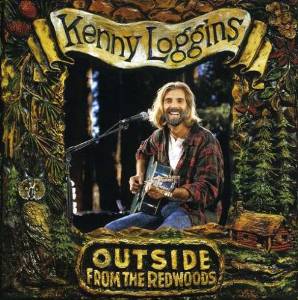 Reproducing the proper scale of the venue on a live recording is very important to me. One recording that really tests a system’s ability to do that is Kenny Loggins’ Outside From the Redwoods [Sony]. Talk about impressive concert venues, this one was recorded live from the Redwood Forest of UC Santa Cruz, California.The EP4.7 made listening to this disc an experience, which is exactly what going to a live concert is. There is a lot of interplay with the audience and the size of the soundstage that gets projected makes you feel drawn into and among the crowd. Particularly on familiar songs like track two, a cover of “What a Fool Believes,” a duet with Loggins and former Doobie Brother, Michael McDonald. My favorite tune though was track nine, “Love Will Follow.”This is another duet but this time with R&B artist Shanice. These speakers do a splendid job of placing singers and musicians in realistic space, with realistic height and depth and providesa very linear tonal balance.
Reproducing the proper scale of the venue on a live recording is very important to me. One recording that really tests a system’s ability to do that is Kenny Loggins’ Outside From the Redwoods [Sony]. Talk about impressive concert venues, this one was recorded live from the Redwood Forest of UC Santa Cruz, California.The EP4.7 made listening to this disc an experience, which is exactly what going to a live concert is. There is a lot of interplay with the audience and the size of the soundstage that gets projected makes you feel drawn into and among the crowd. Particularly on familiar songs like track two, a cover of “What a Fool Believes,” a duet with Loggins and former Doobie Brother, Michael McDonald. My favorite tune though was track nine, “Love Will Follow.”This is another duet but this time with R&B artist Shanice. These speakers do a splendid job of placing singers and musicians in realistic space, with realistic height and depth and providesa very linear tonal balance.
But let me stop beating around the bush here. When I saw that these speakers, despite a rather modest stature, had a 12” midrange and a 15” woofer, there was only one thing I could think of: Can they rock? Certain types of music, particularly rock, where there tends to be an abundance of cymbal crashes and screeching guitar riffs, can be a bit much for some 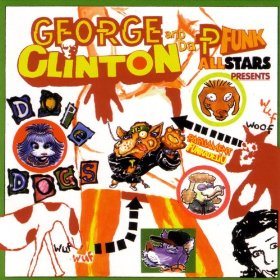 speakers. Often they lose their composure and start to sound bright and edgy. So when I began listening to George Clinton’s Dope Dogs [Cabana Boy Records] I knew it would be a proper litmus test for these Emerald Physics speakers. Despite being known as the “Godfather of Funk,” Clinton also has roots in rock. His group Funkadelic was a decidedly acid-rock band in their early days and this album is sort of a tip-of-the-hat to those days. The first track, “Dog Star” is a hard driving, pulse-pounding tune that is gushing with spectacular drum work, deep-deep bass and roaring guitar solos. This is a song that begs to be cranked and crank it I did. The EP4.7 were brilliant. They never sounded hard or overblown. The low end was powerful and tight and not once did I find myself searching for the volume control. There was just a tad bit of muddiness in the lower midrange compared to my Maggies, but believe me, this disc, at the volume levels I was playing it, has brought far more expensive speakers I’ve reviewed to their proverbial knees . Once I backed down on the volume to more spouse permissible levels, that muddiness firmed up and the top-to-bottom presentation was spot on. And again, there is no confining sweetspot. These speakers will fill a good sized room with music that is enjoyable from almost anywhere.
speakers. Often they lose their composure and start to sound bright and edgy. So when I began listening to George Clinton’s Dope Dogs [Cabana Boy Records] I knew it would be a proper litmus test for these Emerald Physics speakers. Despite being known as the “Godfather of Funk,” Clinton also has roots in rock. His group Funkadelic was a decidedly acid-rock band in their early days and this album is sort of a tip-of-the-hat to those days. The first track, “Dog Star” is a hard driving, pulse-pounding tune that is gushing with spectacular drum work, deep-deep bass and roaring guitar solos. This is a song that begs to be cranked and crank it I did. The EP4.7 were brilliant. They never sounded hard or overblown. The low end was powerful and tight and not once did I find myself searching for the volume control. There was just a tad bit of muddiness in the lower midrange compared to my Maggies, but believe me, this disc, at the volume levels I was playing it, has brought far more expensive speakers I’ve reviewed to their proverbial knees . Once I backed down on the volume to more spouse permissible levels, that muddiness firmed up and the top-to-bottom presentation was spot on. And again, there is no confining sweetspot. These speakers will fill a good sized room with music that is enjoyable from almost anywhere.
Conclusion
My time with the Emerald Physics EP4.7 loudspeakers has been extremely enjoyable. It’s actually quite a remarkable achievement to build a speaker that combines so many wonderful attributes, combining innovative technologies, attractive styling, and wonderful sonics all in a product that is a flat-out bargain compared to a lot of what I just saw a few months ago at CES. And the real kicker… no box! Bravo to the folks at Emerald Physics! It’s still early in the year and I’ve already encountered an obvious choice as a 2015 Most Wanted Component. It’s gonna be a great year. Highly recommended.


dave thomas
Specifications:
EP4.7:
System Type: 3-way, Bi-amplified Dynamic Dipole – DSP equalized
Frequency Range: 28Hz–22kHz -1dB/+.5dB from target curve
Frequency Linearity: +/- 1dB from 100Hz-20kHz from target curve
Impedance: 8 Ohms nominal bass / 8 ohms midrange/tweeter
Max Power input: 150W RMS, 300W program
Sensitivity: 95dB 2.83V @ 1M @ 1kHz
Drivers: High Frequency: 1 inch exit Polyester compression driver
Mid Frequency: Custom Emerald Physics 12 inch paper cone coaxial
Low Frequency: Custom Emerald Physics 15 inch paper cone
Crossover: Special Ed. Mid/high–Passive outboard 3rd order acoustic filter @ 900Hz.
Low/Mid –External DSP Asymmetrical active network @ 250Hz.
Frequency contour: Digital equalization – Emerald Physics DSP2.4
Standard Finish: Automotive 8 stage Tri-coat finishes in 5 colors
Optional Finishes: Ancient Cocobolo and Santos Rosewood faux wood Tri-coat
Dimensions: 38.75”H x 22”W x 3”D (Baffle) (15” with rear base)
Weight: Net: 65 lbs each, Shipping: 80 lbs each
Price: $6,995/pr
Contact:
Walter Liederman
770-667-5633
Email: underwoodwally@aol.com
Website: http://www.emeraldphysics.com
Stereo Times Masthead
Publisher/Founder
Clement Perry
Editor
Dave Thomas
Senior Editors
Frank Alles, Mike Girardi, Key Kim, Russell Lichter, Terry London, Moreno Mitchell, Paul Szabady, Bill Wells, Mike Wright, Stephen Yan, and Rob Dockery
Current Contributors
David Abramson, Tim Barrall, Dave Allison, Ron Cook, Lewis Dardick, Dan Secula, Don Shaulis, Greg Simmons, Eric Teh, Greg Voth, Richard Willie, Ed Van Winkle, and Rob Dockery
Music Reviewers:
Carlos Sanchez, John Jonczyk, John Sprung and Russell Lichter
Site Management Clement Perry
Ad Designer: Martin Perry





Be the first to comment on: Emerald Physics EP4.7 Loudspeaker